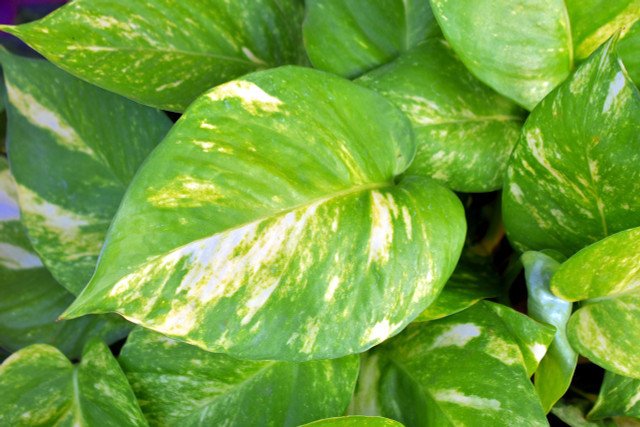Pothos plants are quick growing and can get out of hand without proper care. Read on to learn about repotting pothos plants and what you should look out for.
In order to maintain the right environment for Pothos plants, they need to be repotted every year. The roots of Pothos plants need room to “stretch” out and if they remain in too small a pot can become compacted. This will not only cause them to stop growing properly, but also begin to stop the plant from absorbing water and nutrients. Repotting pothos plants is therefore a necessary part of pothos care.
You should aim to repot your pothos every year (in the spring or early summer) to make sure that the soil doesn’t become too compact, nor the roots entangled, either of which can stop the plant from absorbing the proper water and nutrients. You can tell that your pothos plant needs repotting when you see that the
- soil is moldy,
- the plant is running out of space to grow and is getting tangled, or
- the roots are coming out of the drainage holes in the bottom of the pot.
Repotting Pothos: How to Do It

(Foto: CC0 / Pixabay / Javaistan)
To ensure your pothos doesn’t grow to become compacted in its pot, you need to repot your plant following these steps:
- Water before: the roots of pothos need to remain somewhat moist before you transfer them to a new pot, so water generously a day or two ahead of repotting.
- Gently remove: the pothos and roots should be gently removed from its old pot. If you need to, turn the pot on its side and use a spatula to gently remove the roots from the sides of the pot.
- Upgrade the pot: if the roots have begun to show, select a pot a few sizes up from the original pot. Fill the new pot with soil up to two inches in the bottom of the pot.
- Place the plant in the pot: place the plant in the new pot, and cover with soil until about two inches remain from the rim.
- Water: water the plant generously until the water comes out the drainage hole.
Caring for Pothos Plants



(Foto: CC0 / Pixabay / SandeepHanda)
If you want your pothos plants to thrive, you’ll need to pay attention to the following:
- Correct pot: because pothos can grow quickly, ensure that you have a large enough pot for the roots to grow without becoming entangled.
- Proper watering: water the plant every 1-2 weeks. If light is more direct, you will need to water a bit more often than if indirect.
- Sunlight: pothos like indirect light, not intense direct sun. The correct temperature is between 65 and 85 degrees Fahrenheit.
- Proper soil: these plants need proper drainage, so make sure you use a well draining soil or make your own.
- Fertilizer: you should fertilize your pothos every three months or so, and make sure you use a peat free fertilizer. The easiest way to do that is to make your own plant food.
Read on:
- 6 Ways to Water Plants While Away On Vacation: How-To + Tips
- 7 Flowers to Plant In March (& What Else To Do In Your Garden
- Growing Mint: Mint Plant Care in your Garden or Kitchen
Do you like this post?






